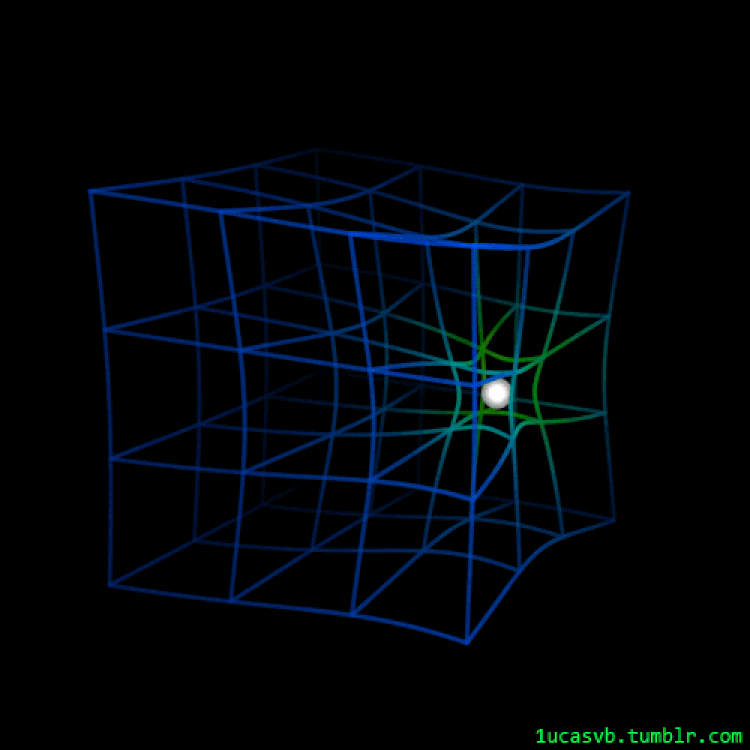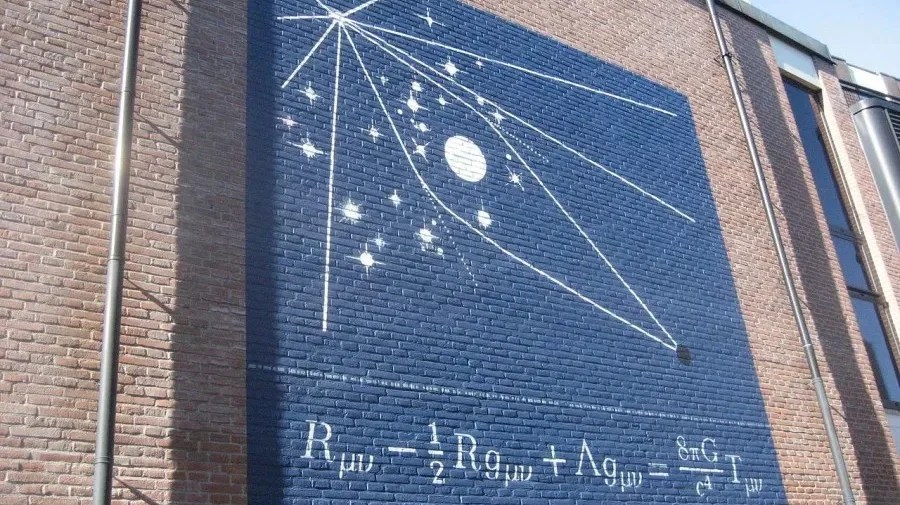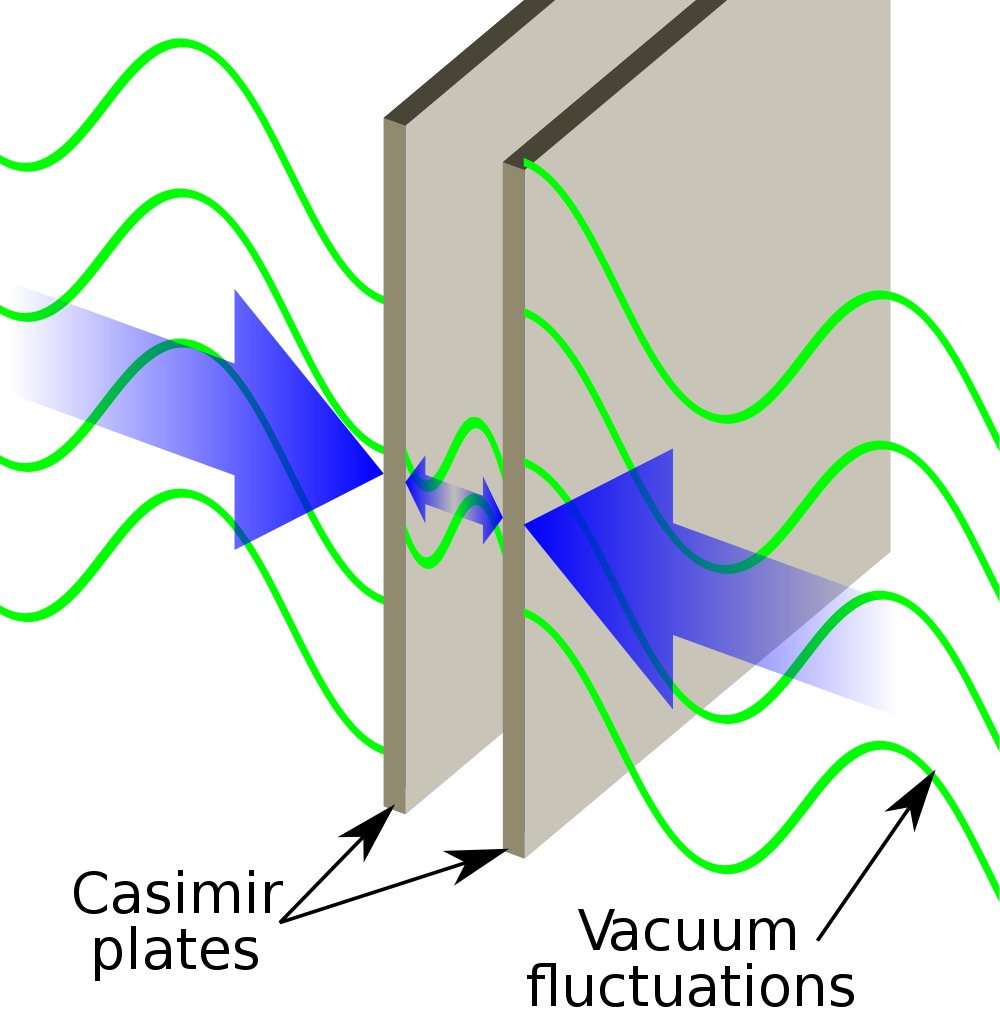Sign up for the Starts With a Bang newsletter
Travel the universe with Dr. Ethan Siegel as he answers the biggest questions of all.
Here on planet Earth, humans have long sought to harness the power of nature to perform difficult tasks for them. Thousands of years ago, agriculture advanced greatly when the combination of domesticated animals and the plow allowed for non-human energy to be put to use in farming practices. The production of food from grain took a great leap forward when windmills were built and attached to millstones. Mastering processes like combustion allowed us to harness the controlled release of energy at will, and combining a variety of mechanical, chemical, and even nuclear power sources with the process of electrification helped lead to our modern world.
Sure, there are plenty of sources of clean, abundant energy out there for us to harness: wind, solar, flowing water, or even nuclear fission and fusion processes enabled by the power of the atomic nucleus. However, those all require leveraging the energy from particles, either macroscopically or on the quantum level, to power our energy needs. There’s another option that seeks to go beyond that: zero-point energy, or ZPE for short. Is that a real prospect, however, or just a pipe dream promoted by scammers? That’s what Patreon supporter Dave Weller wants to know, asking:
“Can you explain zero point energy and whether it could be used for “free, endless energy generation.” Sounds like hokum to me, but ZPE is too complicated for my brain.”
I bet you it’s not too complicated for you; I bet it just hasn’t been explained properly. Let’s dive in and see what the hype, and the hokum (because there is some), is all about.

Dark, dusty molecular clouds, like Barnard 59, part of the Pipe Nebula, appear prominent as they block out the light from background objects: stars, heated gas, and light-reflecting material. Any collection of matter in a physical system, in principle, has a lowest-energy configuration that’s possible, with this molecular cloud’s lowest-energy configuration being a single black hole. The current configuration is much more energetic than that.
Credit: ESO
You can start by imagining any physical system at all: it can involve any number of particles (from zero on up) in any finite volume of space, in any initial configuration you can dream up. This system is going to have all sorts of properties inherent to it, including an amount of total energy that’s inherent to this system. Perhaps you have a collection of atoms: a cloud of gas. Perhaps your system is simpler: a proton and an electron. Or perhaps it’s as simple as it gets: a system with nothing inside of it at all, just plain old empty space on its own.
For any of these systems, you can ask, “what’s the lowest-energy configuration of such a system?” For the collection of atoms, you can decrease their energy by binding them together in as tight of a configuration as possible. A solid ball will have less energy than a diffuse cloud of gas; a bound crystalline lattice will have less energy than an amorphous ball; a collapse down to a black hole will have less energy than any of those. But there’s no configuration that has less energy than that; the black hole, for a collection of massive particles, is the lowest-energy state.
For a proton and an electron, there isn’t enough mass to create a black hole, but a bound proton and electron (i.e., a neutral atom) has less energy than a free proton and a free electron, together. And although there are many different energy levels that an electron can occupy, there’s a lowest-energy state: what we call the ground state, where the electron is in its lowest-energy (i.e., n=1) configuration.

Electron transitions in the hydrogen atom, along with the wavelengths of the resultant photons, showcase the effect of binding energy and the relationship between the electron and the proton in quantum physics. The Bohr model of the atom provides the coarse (or rough, or gross) structure of these energy levels. Hydrogen’s brightest atomic transition is Lyman-alpha (n=2 to n=1), but its second brightest is visible: Balmer-alpha (n=3 to n=2), which emits visible (red) light at a wavelength of 656 nanometers. The energy lost by an electron cascading down the energy levels gets emitted in the form of photons, with the lowest energy (n=1) state representing the ground, or lowest-energy, state.
That’s the lowest-energy state, also known as the ground state or the zero-point energy state. For a proton and an electron, that’s the ground (n=1) state of the hydrogen atom, where the electron has transitioned to the lowest-energy bound state possible with respect to the proton.
Is the energy of the proton and electron in this state truly zero, however?
The answer is no. The electron is still in motion, and still has an uncertainty to its position due to the nature of quantum mechanics. Additionally, there is still both orbital and spin angular momentum for the electron and proton, and the energy associated with that angular momentum cannot be subtracted away.
This is profound. It teaches us that there is a lowest-energy state that realistic physical systems can achieve, and that this state doesn’t necessarily match up with “zero energy” like we might think it needs to. Within physical theories like general relativity, there are energy conditions that forbid the existence of (absolutely) negative energy states, but the zero-point energy of any system isn’t required to be zero. It could also have a positive, non-zero value to it, which is indeed the case for the hydrogen atom, for instance.

A representation of flat, empty space with no matter, energy, or curvature of any type. If this space has the lowest zero-point energy possible, it won’t be possible to reduce it any further. During inflation, regardless of its initial shape, space is stretched flat, and particles are rapidly driven away, with a small, 1-part-in-30,000 fluctuation (not visible here) remaining as the only deviation from uniformity.
But now, let’s consider empty space all by itself: with no particles in it, no radiation, no external fields, no nearby sources of matter, etc. Just flat, pristine, empty space, with no interference from quanta in any way. That flat, empty space is, to the best degree we can imagine, the closest physical equivalent to “nothingness” that actually still exists. For a long, long time, most physicists assumed that if you took this system of empty space and asked, “what is the energy of empty space itself?” it would only make sense for the answer to be zero. After all, without any sources of energy, you’d assume that the zero-point energy of space would be compelled to be zero. All other systems derive their energy from the stuff in the system. No stuff, no energy, and hence the zero-point energy should be zero.
Is that actually true, however?
There are two paths to thinking about the zero-point energy of empty space. One is through the lens of our theory of gravity, Einstein’s general relativity, and the other is through the lens of the quantum realm of the particles and fields that describe nature, quantum field theory. Einstein recognized immediately, in his new theory, that spacetime behaved as a fabric, and it was the presence, properties, motion, and distribution of all the various forms of matter and energy that determined the curvature and evolution of spacetime, and that it was that curved, evolving spacetime that dictated how matter and energy were going to move through it.

An animated look at how spacetime responds as a mass moves through it helps showcase exactly how, qualitatively, it isn’t merely a sheet of fabric. Instead, all of 3D space itself gets curved by the presence and properties of the matter and energy within the Universe. Space doesn’t “change shape” instantaneously, everywhere, but is rather limited by the speed at which gravity can propagate through it: at the speed of light. The theory of general relativity is relativistically invariant, as are quantum field theories, which means that even though different observers don’t agree on what they measure, all of their measurements are consistent when transformed correctly.
Now, here’s the strange thing. Even if you take all of those external sources of matter and energy away — removing particles, radiation, fields, sources of curvature, etc. — entirely, you’re left with empty space itself. But empty space doesn’t need to be empty of energy; instead, there’s one more term that you can write down in general relativity: a term representing a cosmological constant. This cosmological constant represents a form of energy inherent to space itself, and cannot be removed, separated from, or extricated from the very fabric of space.
In the absence of all other forms of matter and energy, a Universe with a cosmological constant will either contract (if the cosmological constant is negative) or expand (if the cosmological constant is positive), with contraction meaning that space itself is fundamentally disappearing over time, and expansion meaning that new space is fundamentally getting created over time. The energy density of a Universe filled with a cosmological constant remains, well, constant, even as the Universe itself either expands or contracts. Although Einstein initially introduced a (positive) cosmological constant with an ulterior motive, to prevent a Universe filled with matter from collapsing, it turns out that any value for such a cosmological constant (positive, negative, or zero) is admitted by the equations.

A mural of the Einstein field equations, with an illustration of light bending around the eclipsed Sun: the key observations that first validated general relativity four years after it was first theoretically put forth: back in 1919. The Einstein tensor is shown decomposed, at left, into the Ricci tensor and Ricci scalar, with the cosmological constant term added in after that. If that constant weren’t included, an expanding (or collapsing) Universe would have been an inevitable consequence. However, the equation permits that constant to take on any value, with only the null energy condition disallowing overall negative energy states.
Credit: Vysotsky / Wikimedia Commons
On the other hand, there’s quantum field theory: the theory that not just the particles that are present throughout the Universe are quantum in nature, but that the fields (related to the fundamental forces) permeating space are inherently quantum, too. That means the fields for:
- the electromagnetic force,
- the weak nuclear force,
- and the strong nuclear force,
permeate all of space as well, even in the absence of sources, like particles. And just as general relativity (for the gravitational force) has a zero-point energy that takes the form of the cosmological constant — where it could be, but isn’t necessarily, zero — these three quantum fields are each allowed to have a zero-point energy as well: their vacuum expectation values.
It’s eminently fair to state that we don’t know how to calculate what those vacuum expectation values should be, because the naive (and incorrect) way to do it leads to values that would’ve destroyed the Universe in just a tiny fraction of a second: something that clearly didn’t happen. But there are a few clever ways to see that there really is energy stored in these fields, even in empty space itself. One prominent way to do it is by demonstrating the Casimir effect. You take two conducting parallel plates, just like you’d use to construct a capacitor. You set them up in a vacuum, and leave just a thin, narrow space between them. And then, you observe whether there’s a force between them or not, and see whether it’s attractive, repulsive, or zero.

The Casimir effect, illustrated here for two parallel conducting plates, excludes certain electromagnetic modes from the interior of the conducting plates while permitting them outside of the plates. As a result, the plates attract, as predicted by Casimir in the 1940s and verified experimentally by Lamoreaux in the 1990s. The extra restrictions on the type of electromagnetic waves that can exist between the plates can be derived in various quantum field theories.
The Casimir effect was predicted way back in 1948, and remained a theoretical curiosity for decades. But then in 1997, experimental physicist Steven Lamoreaux actually detected the predicted Casimir force on ~micron scales, and found that it was consistent (within ~5% error) of the theoretical prediction. The plates really do attract, with the explanation being that:
- outside the plates, all electromagnetic modes are free to propagate,
- but in between the plates, the boundary conditions (set by the plates) forbid certain modes,
creating an attractive force between the plates as a result. This longstanding prediction, although it took nearly half a century, was finally vindicated by experiment.
Something else happened in the late 1990s that’s extremely relevant to the zero-point energy of space problem: the discovery of dark energy. For generations, cosmologists who studied the Universe wondered what the ultimate fate of the Universe would be. The Universe was expanding, sure, but was there enough mass, and enough gravitation, to overcome the expansion, bring it to a halt, and reverse it, leading to contraction and eventually a Big Crunch? Or would it expand forever, slowing down but never stopping or reversing, ending in a Big Freeze?
As it turned out, the Universe wasn’t slowing in its expansion at all, but doing something that few had anticipated: it was accelerating in its expansion.

The expected fates of the Universe (top three illustrations) all correspond to a Universe where the matter and energy combined fight against the initial expansion rate. In our observed Universe, a cosmic acceleration is caused by some type of dark energy, which is hitherto unexplained. All of these Universes are governed by the Friedmann equations, which relate the expansion of the Universe to the various types of matter and energy present within it.
The Universe wasn’t just filled with matter and radiation, but the implication was that there was a positive amount of energy inherent to space itself: a greater-than-zero zero-point energy that was omnipresent. So this brings us up to the present day, where we know that:
- general relativity allows there to be a zero-point energy to space that’s different from zero, with the null energy condition forbidding negative energy states,
- quantum field theory allows there to be a zero-point energy to space that’s different from zero, and the Casimir effect provides evidence that there is some form of energy that these fields carry even in the absence of any form of matter or radiation,
- and that our observations of the expanding Universe are consistent with the zero-point energy of space (or, equivalently, the cosmological constant) having a small-but-positive non-zero value.
The question then becomes: is it possible to use this energy to do work of some type? Can we use this dark energy, this zero-point energy, this vacuum energy, or whatever you want to call it, to actually power our activities here on Earth? Can we extract energy from the vacuum of space, from the state that it’s presently in, and convert that into the type of energy that’s usable here by humans on Earth?

A scalar field φ in a false vacuum. Note that the energy E is higher than that in the true vacuum or ground state, but there is a barrier preventing the field from classically rolling down to the true vacuum. Note also how the lowest-energy (true vacuum) state is allowed to have a finite, positive, non-zero value. The zero-point energy of many quantum systems is known to be greater than zero, and nobody knows if today’s observed dark energy is due to a true vacuum or false vacuum state.
There’s a big problem with attempting to make such a scenario viable. If there is a lower-energy state than what we currently think of as the zero-point energy — a lower-energy state to which our current quantum vacuum could transition into — then yes, that’s the one viable mechanism by which energy could be extracted from the zero-point energy. But if that happened, that would cause a transition in the vacuum of space itself: from what we currently think of as the zero-point energy, which would turn out to be a false vacuum, to an even lower-energy state, which could correspond to the true vacuum.
This transition could happen, for instance, through the process of quantum tunneling: where a higher-energy state spontaneously transitions to a lower-energy state, emitting energy that corresponds to the difference between those states in the process. We could extract-and-use that energy, sure. But the side effect of such a transition would be hugely problematic: it would likely correspond to a change in the fundamental parameters that govern reality, like the fundamental constants of the Universe.
A transition would be tantamount to having the quantum vacuum decay, which is a candidate scenario for the end of our Universe. It would create a bubble of destruction that would propagate outward at the speed of light, destroying planets, molecules, atoms, and possibly even fundamental particles themselves in the process.

In the far future, it’s conceivable that the quantum vacuum will decay from its current state to a lower-energy, still more stable state. If such an event were to occur, every proton, neutron, atom, and other composite structure in the Universe would spontaneously destroy itself in a remarkably destructive event, whose effects would propagate and ripple outward in a sphere at the speed of light. This “bubble of destruction” would be unnoticeable until it arrived.
Sure, you might wonder, “why couldn’t I set up a spring in between the conducting parallel plates in a Casimir effect setup,” or “why couldn’t I place two objects many millions of light-years apart and let dark energy do the work and extract the energy from that?” It’s a fascinating idea that’s worth considering as a thought experiment, because it’s remarkable that such a phenomenon could be tapped into even in principle. Some have even speculated that such forces could be used to create a traversable wormhole, at least, in principle. But as far as practicality goes, it’s woefully insufficient: at the scales we can conduct experiments on or physically manage setups, the energy we could extract would be on the order of the strength of the atomic Van der Waals force: of about a thousandth of an electron-volt.
On the other hand, there are all sorts of “free energy” scams out there: cold fusion, perpetual motion, reactionless engines, and yes, zero-point energy claims. Couched in the language of physics, these con artists — a mix of those engaged in deliberate deception and others whose incompetence is so great that they’ve fooled themselves — are happy to sell you devices (or promises of devices) that will perform the work of separating you from your money. In summary, zero-point energy is real, positive, and non-zero, and there are theoretically a couple of different ways that one could extract a tiny amount of usable energy from it without destroying the Universe. But if someone is claiming that they’ve unlocked the secret to limitless, free energy, and that it doesn’t involve physical reactions of physically real particles, “hokum” is one of the gentlest words you could choose to describe what they’re actually selling.
Send in your Ask Ethan questions to startswithabang at gmail dot com!
Sign up for the Starts With a Bang newsletter
Travel the universe with Dr. Ethan Siegel as he answers the biggest questions of all.
Source link


